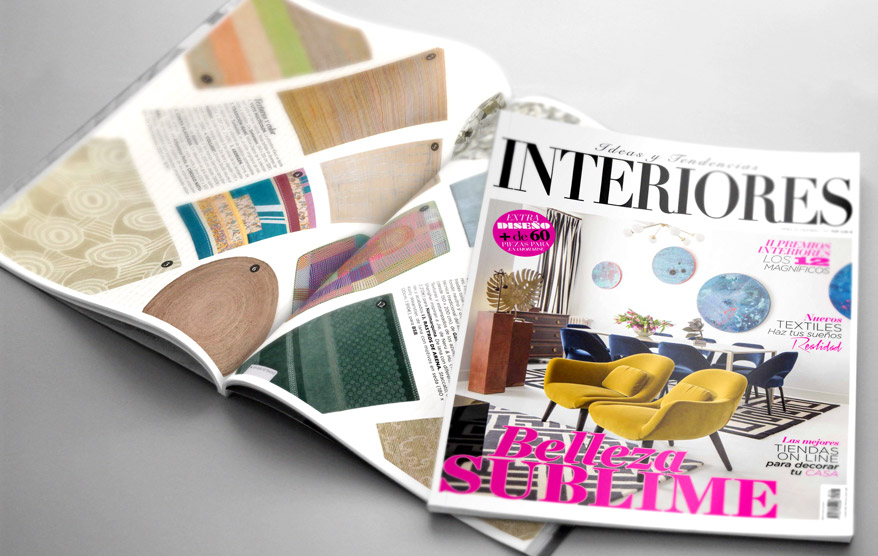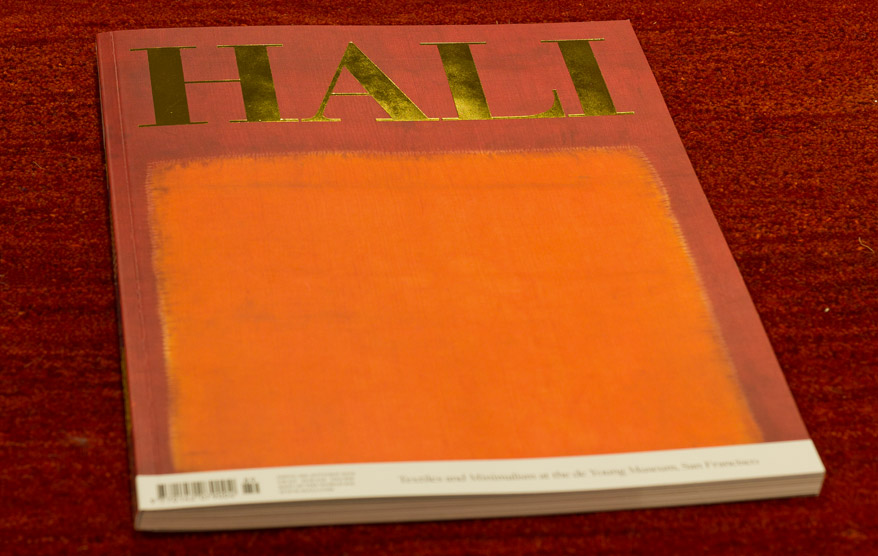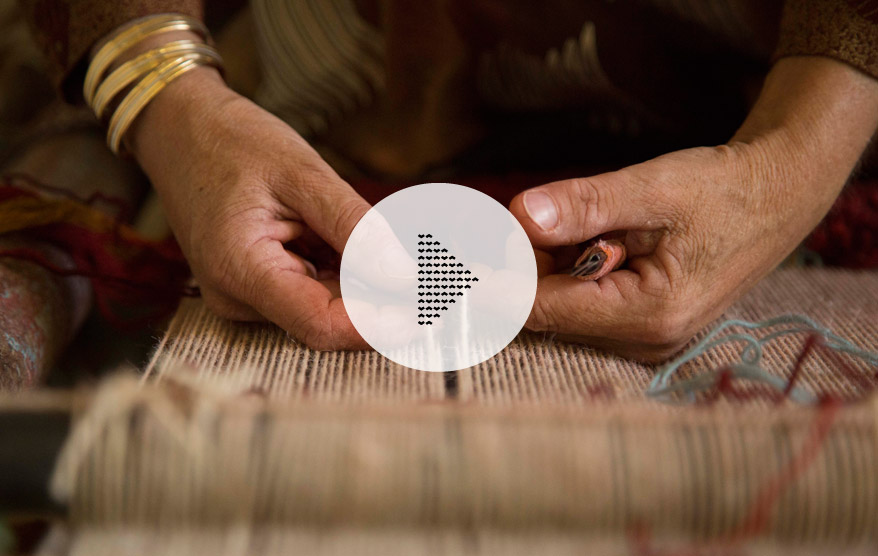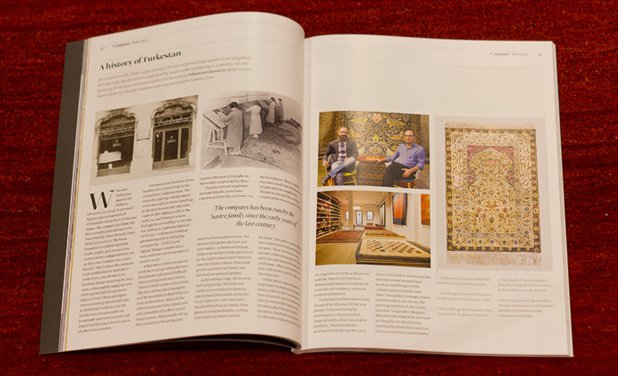
We are really happy to be on the Autumn 2016 issue of the prestigious HALI magazine, the most renowned international publication in the carpet world.
Text by Farzin Sebastian Ghandchi.
A history of Turkestan
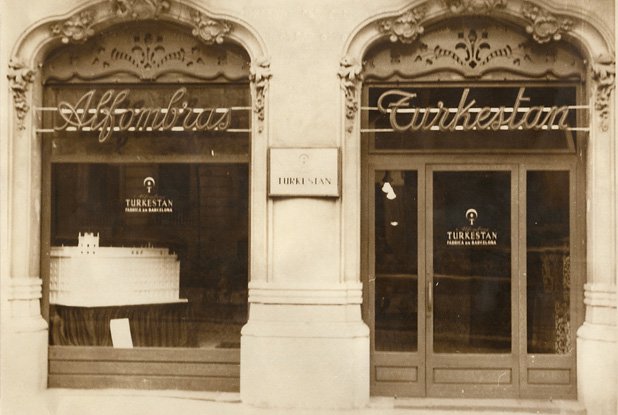
Turkestan premises in Rambla Catalunya 78, Barcelona in 1932.
In a country with ‘little carpet culture’, the idea of presenting carpets in an art gallery setting with regular shows supported by multimedia marketing is a novelty. For the opening of the new Turkestan Gallery in Barcelona, Sebastian Ghandchi spoke to Juan Sastre about his family business and relaunching the historic firm.
What sets Turkestan apart is the ability to always be ‘on trend’. From small beginnings as importers of ‘Orientalist’ items from China and Japan, the company has been run by successive generations of the Sastre family since the early years of the last century. The focus broadened to include Spanish-made carpets, and in 1932 Juan Sastre’s father and grandfather set up their own handwoven carpet factory. ‘That’s when the company truly established its innovative credentials, mainly due to its dynamic design department’, says Juan, a thoroughly engaging man with a great deal of experience. Imports from China and Japan were eventually abandoned, and as Alfombras Turkestan SA the family concentrated solely on handmade and fitted carpets, and began introducing oriental rugs to the Barcelona market. ‘We were at the forefront of the handwoven carpet boom in the 50s and 60s’, explains Juan. ‘We started acquiring antique pieces in the 60s and 70s when travelling to the East became my role; then came OCM’s ‘Afghan Gold’ in the early 70s, and Tibetan carpets through Bryan Huffner in the late 80s. Zollanvari gabbehs followed in the 90s—a dynamic working partnership that is still going strong today—Turkish and Afghan ‘design’ carpets since 2000, and now our new project of carpets as art.’
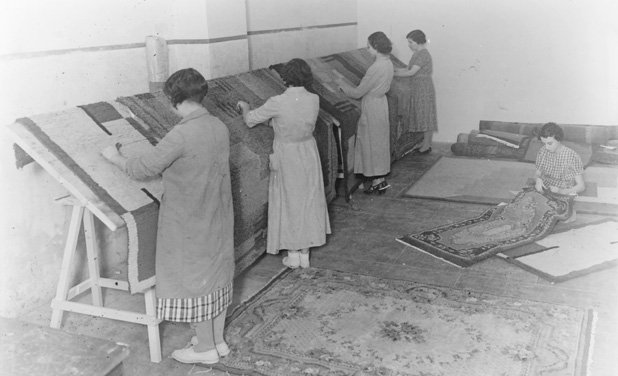
Finishing section of Turkestan’s carpet factory in Barcelona, 1950s.
Asked about other companies with such a long trading history, Juan paints a picture of difficult times and discount merchants: ‘There is little carpet culture here. The likes of Juan Rica Basagoiti and Bermondsey in Madrid do not exist in Barcelona. Many of the older businesses have closed, and only a handful of modern carpet shops remain. Most people roll up their carpets in the spring and summer because it’s simply too hot to have carpets on the floor.’
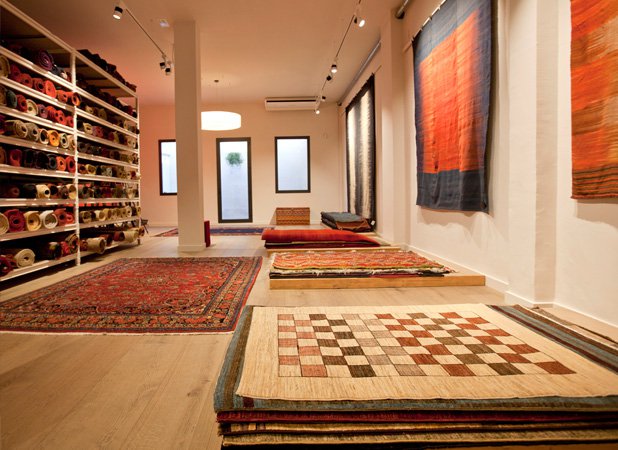
The inside of the new gallery recently reopened in Barcelona’s fashionable Eixample district.
‘There is interest in gabbehs and patchworks, so we have concentrated on the very best. Our taste has been quite eclectic. We present things people have not seen before—a fusion of antique, tribal and modern looks, governed by the quite conservative Spanish taste for warm colours (blues and greens just don’t sell here), but above all we present quality.’
As for antique rugs, the answer isn’t surprising. ‘We have not really concentrated on them as the demand is so small, some 10 to 15 ‘collectors’ over the years. People either buy privately, from general antiques dealers, or from international dealers and at auction abroad.’ There is price resistance and even Iberian-made carpets are not sought after. ‘People tend to ask for a style of carpet rather than a type of carpet by name.’ The gallery nevertheless has a selection of old and antique carpets. ‘They are mainly our private collection acquired in the early 60s and our pride and joy!’ he continues. ‘There are essentially two collections, one for sale and the other not.’
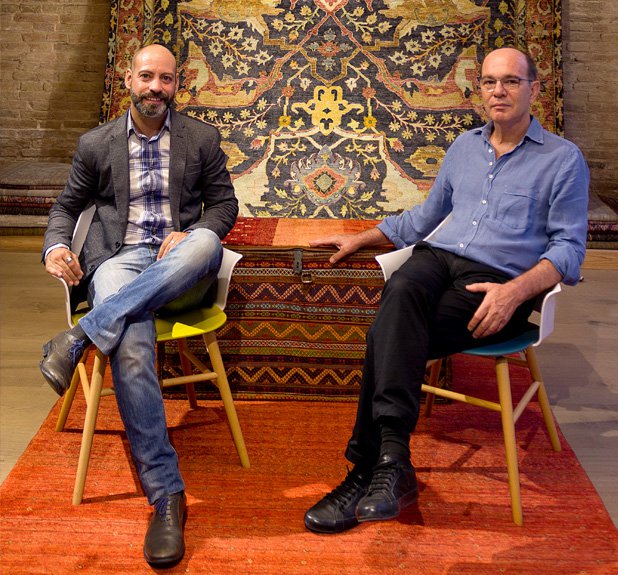
Brais Rey, gallery manager, and Juan Sastre, Turkestan’s owner.
Asked about rug and textile highlights in and around Spain, Sastre refers to the recent HALI Tour itinerary, but in Catalonia also recommends visits to the Terrassa, Barcelona’s textile museum, the Pedrera carpets (Turkestan’s reproductions based on the originals in the Reus Museum), and the Tapestry of Creation, a Romanesque panel of needlework from the 11th century, in Girona Cathedral Museum.
Turkestan’s website shows that the stock for the start of the ‘new project’ is focused towards contemporary Persian tribal material with a clear minimalist aesthetic. ‘We have always developed with the market, so it was a tribal look in the 80s and 90s and now we are pioneering a modern look fitting in with the current interior trends,’ says Juan. ‘Our gallery manager is also a stylist and my son Javier, the fourth generation in the family business, is a graphic designer. They have developed the new look for the gallery’s identity and multimedia promotions and run all our activities on social media.’
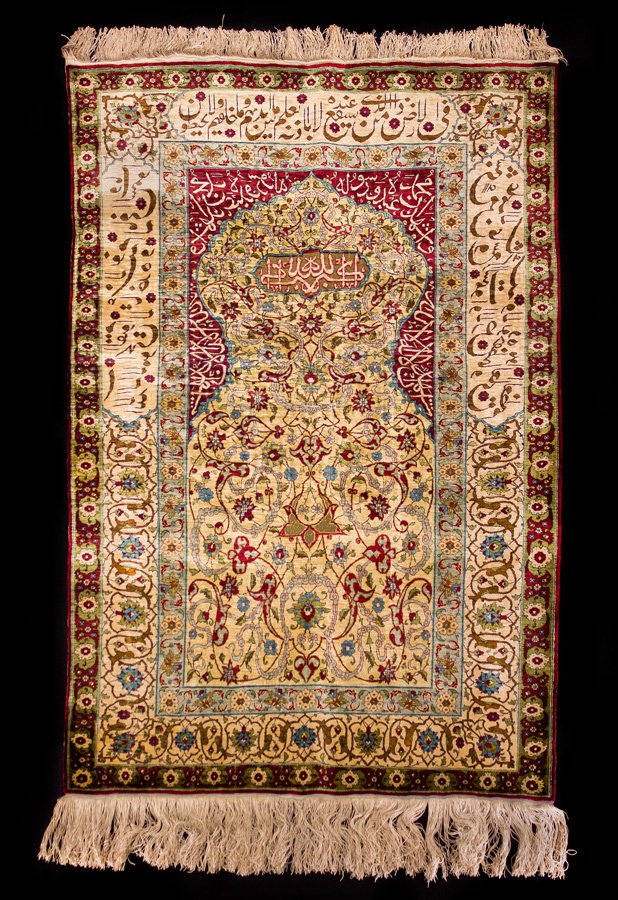
Kum Kapi prayer rug, Istanbul, Turkey, around 1910. 1 m knots/square meter, all silk with metal brocade. Turkestan collection.


